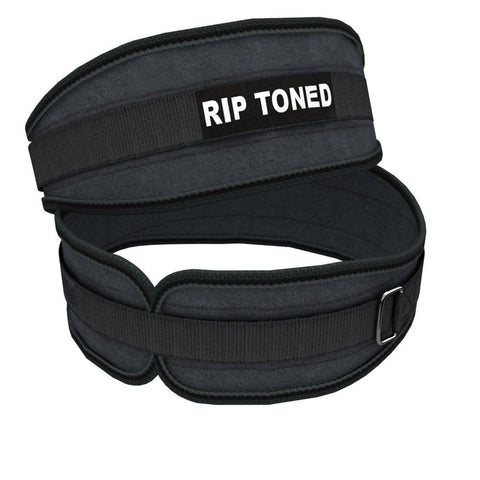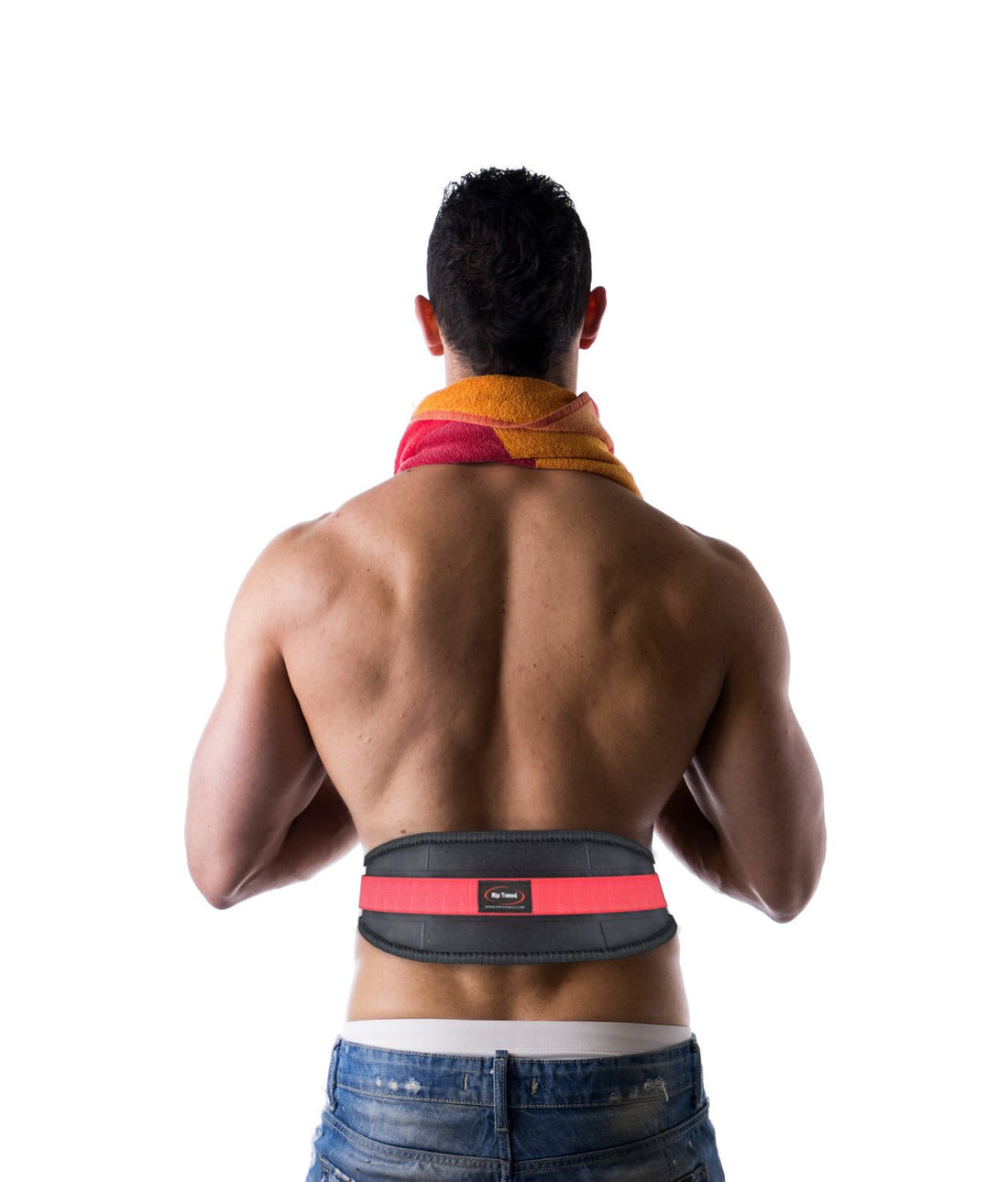Weightlifting belts have long been a go-to accessory for professional weightlifters and bodybuilders. However, they are also becoming increasingly popular among recreational gym-goers. These thick belts, made of leather or heavy-duty fabric, are worn around the waist during weightlifting exercises to provide additional support and stability.
While some people may view weightlifting belts as unnecessary or even detrimental, the truth is that they offer many benefits when used correctly. In this article, we will explore the advantages of weightlifting belts and debunk some common misconceptions surrounding their use.
What is a weightlifting belt?
A weightlifting belt is a thick, often leather or heavy-duty fabric belt worn around the waist during weightlifting exercises. It typically has a buckle or Velcro closure and can vary in width, with widths ranging from 3 to 8 inches.
The primary purpose of a weightlifting belt is to provide additional support and stability for the core muscles while lifting heavy weights. The belt works by increasing intra-abdominal pressure, which helps to stabilise the spine and prevent excessive movement during lifts.
Aside from the standard weightlifting belt, there are also powerlifting belts that are wider in the back and tapered in the front. These belts are specifically designed for powerlifters who perform exercises such as squats and deadlifts, where they need maximum support and stability in the lower back.
Advantages Of Weight Lifting Belt
There are various advantages of using a weightlifting belt, including:
Increased stability and support
One of the primary benefits of using a weightlifting belt is the increased stability and support it provides. As mentioned earlier, wearing a weightlifting belt can increase intra-abdominal pressure, which helps to stabilise the spine.
This added stability allows you to lift heavier weights with better control and form. It also reduces excessive movement in the lower back, which can lead to injury. Plus, the extra pressure on the abdomen can also help to support and protect the internal organs during heavy lifts.
Additionally, the belt also provides support for the back muscles, allowing them to work more efficiently and effectively. This can be especially beneficial for people who have weak core muscles or are recovering from a previous injury.
Improved lifting technique
When used correctly, weightlifting belts can also improve your lifting technique. By providing additional stability and support, you can focus on using proper form and technique rather than worrying about your lower back.
The belt can also serve as a tactile cue to remind you to engage your core muscles during lifts, which is essential for maintaining good lifting technique. This can help reduce the risk of injury and improve overall performance.
Also, because the belt allows for better control and stability, you can perform lifts with a more controlled range of motion. This can be especially beneficial for exercises like squats and deadlifts, where proper form is crucial.
Reduced risk of injury
Proper use of a weightlifting belt can significantly reduce the risk of injury during weightlifting exercises. By stabilising the spine and supporting the core muscles, the belt helps to prevent excessive movement that can lead to strains or tears.
Additionally, by allowing for improved lifting technique, weightlifting belts can also help reduce the risk of common injuries such as lower back pain or herniated discs.
It is important to note, however, that weightlifting belts are not a substitute for proper form and should not be relied upon solely for injury prevention. They are simply an additional tool that can help reduce the risk of injury when used correctly.
Increased muscle activation
Another advantage of weightlifting belts is that they can increase muscle activation during lifts. By providing support to the core muscles, the belt allows for better recruitment and activation of other muscles, such as the legs and glutes.
This can lead to increased strength gains and muscle growth over time. Plus, by engaging more muscles during lifts, you are also burning more calories and getting a more effective workout.
Enhanced performance
Last, weightlifting belts can help enhance overall performance during weightlifting exercises. With the added stability, support, and improved technique, you can lift heavier weights with more control and efficiency.
This can lead to increased strength gains, muscle growth, and overall progress in your weightlifting journey. Plus, by reducing the risk of injury and providing better muscle activation, weightlifting belts can also help you push through plateaus and reach new personal records.
Why do some people view weightlifting belts as unnecessary or detrimental?
Despite the many benefits, there are still some misconceptions surrounding weightlifting belts. Some people believe that using a belt can make your core muscles weaker and reliant on the support of the belt.
However, this is only true if the belt is used improperly or relied upon too heavily. Weightlifting belts should not be used as crutches and should only be worn during heavy lifts.
Others may view weightlifting belts as unnecessary because they believe having a strong core is enough to support the spine during lifts. While a strong core is crucial, a weightlifting belt can still provide additional stability and protection for the spine.
Additionally, some people may simply choose not to use a weightlifting belt because they are not comfortable wearing one or do not see the need for it in their specific training routine.
It is also important to note that weightlifting belts should be used with caution and only by experienced lifters who have the proper form and technique. Wearing a belt does not automatically mean you can lift heavier weights without risk of injury. It should be used as a supplement to proper form and technique.
Also, not all lifting exercises require the use of a weightlifting belt. Exercises that involve more upper body movements and do not put as much strain on the lower back may not benefit from wearing a belt.
Does the type of weightlifting belt matter?
The short answer is yes. The type of weightlifting belt you choose can have an impact on its effectiveness and comfort.
There are different types of weightlifting belts, including leather, nylon, and velcro. Leather belts are often preferred for durability and sturdiness but may require a break-in period. Nylon belts are more lightweight and flexible, making them a preferred choice for Olympic lifting.
Velcro belts, on the other hand, offer ease of adjustability but may not provide as much support as leather or nylon belts.
It is also important to consider the width and thickness of the belt. A wider belt can distribute pressure over a larger area, while a thicker belt can better resist deformation and provide more support.
Ultimately, the best weightlifting belt for you will depend on your personal preferences, lifting style, and needs. It is recommended to try out different types of belts before making a decision.
Tips for using weightlifting belts
There are a few things to keep in mind when using weightlifting belts:
- Wear it snugly and correctly - A belt should be worn around the lower back and abdominal region, not on the hips. It should fit snugly but still allow for comfortable breathing.
- Use it for heavy lifts only - As mentioned before, weightlifting belts should only be used for heavy lifts where proper form and technique are crucial. Wearing a belt for every exercise may weaken your core muscles over time.
- Don't rely on it completely - A weightlifting belt should not be used as a substitute for proper form and technique. It is only an additional tool to help with stability and injury prevention.
- Gradually increase weight - If you are new to using a weightlifting belt, it is important to gradually increase the weight and get used to the feeling of wearing one.
- Listen to your body - If a weightlifting belt is causing discomfort or hindering your performance, take it off and reassess your form and technique.
- Properly maintain your belt - To ensure the longevity and effectiveness of your weightlifting belt, make sure to clean and properly store it after use.
By following these tips and using a weightlifting belt correctly, you can reap the benefits of improved stability, muscle activation, and performance while reducing the risk of injury. So, it is important to choose wisely according to your needs.
FAQs
What advantages does a weight belt offer when lifting weights?
A weight belt offers significant advantages by providing additional support to the lower back and core, increasing intra-abdominal pressure during heavy lifts. This support is crucial when performing exercises that place a high demand on the lower back, such as squats and deadlifts. By stabilising the core, a weight belt can help improve lifting technique, increase safety, and potentially enhance lifting performance by allowing athletes to lift weights more effectively.
How do lever belts compare to double-prong belts for weightlifting?
Lever belts are known for their convenience and ease of use, enabling quick adjustments between sets. They provide a consistent fit and can be tightly secured, which is beneficial for exercises requiring substantial core support like squats or overhead presses. Double prong belts, while offering a secure fit, can be more challenging to fasten and adjust due to the dual prongs. However, they are often favoured for their traditional design and durability. The choice between lever and double-prong belts largely depends on personal preference and the specific needs of the weightlifter.
Can wearing a weight belt improve performance in overhead presses?
Yes, wearing a weight belt can improve performance in overhead presses by providing additional support to the core and lower back. This support helps maintain a stable and upright torso during the lift, essential for effectively transferring power from the lower body to the upper body. By enhancing stability and alignment, a weight belt can help lifters achieve a more efficient and powerful overhead press.
Who should consider using a weight belt when they lift weights?
Individuals who engage in heavy lifting or strength training exercises that place significant stress on the lower back and core may benefit from using a weight belt. This includes those who perform high-intensity compound movements like squats, deadlifts, and overhead presses. Weight belts can be particularly advantageous for competitive athletes and experienced lifters aiming to maximise their performance and reduce the risk of injury.
Conclusion
In conclusion, weightlifting belts can be a valuable tool for lifters of all levels as long as they are used correctly and in conjunction with proper form and technique. They provide stability, support, and protection for the spine during heavy lifts, which can lead to increased strength gains and muscle growth over time.
While some may view weight lifting belts as unnecessary or detrimental, it is important to understand their purpose and use them properly. Additionally, the type of weightlifting belt you choose can also make a difference in its effectiveness and comfort.
By following tips for using weightlifting belts and listening to your body, you can experience the benefits and potentially enhance your performance in the gym. Remember to always prioritise safety and proper technique in your weightlifting journey.


